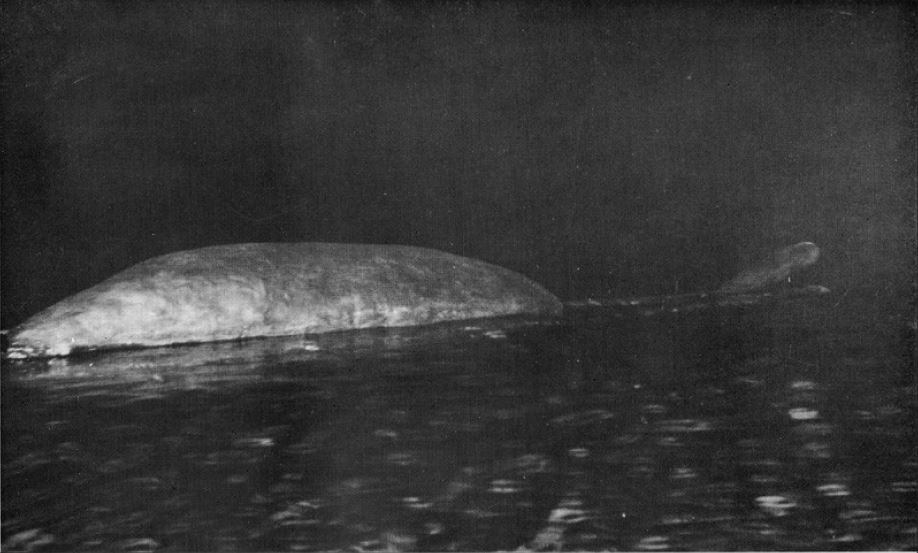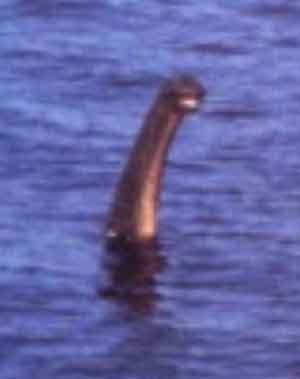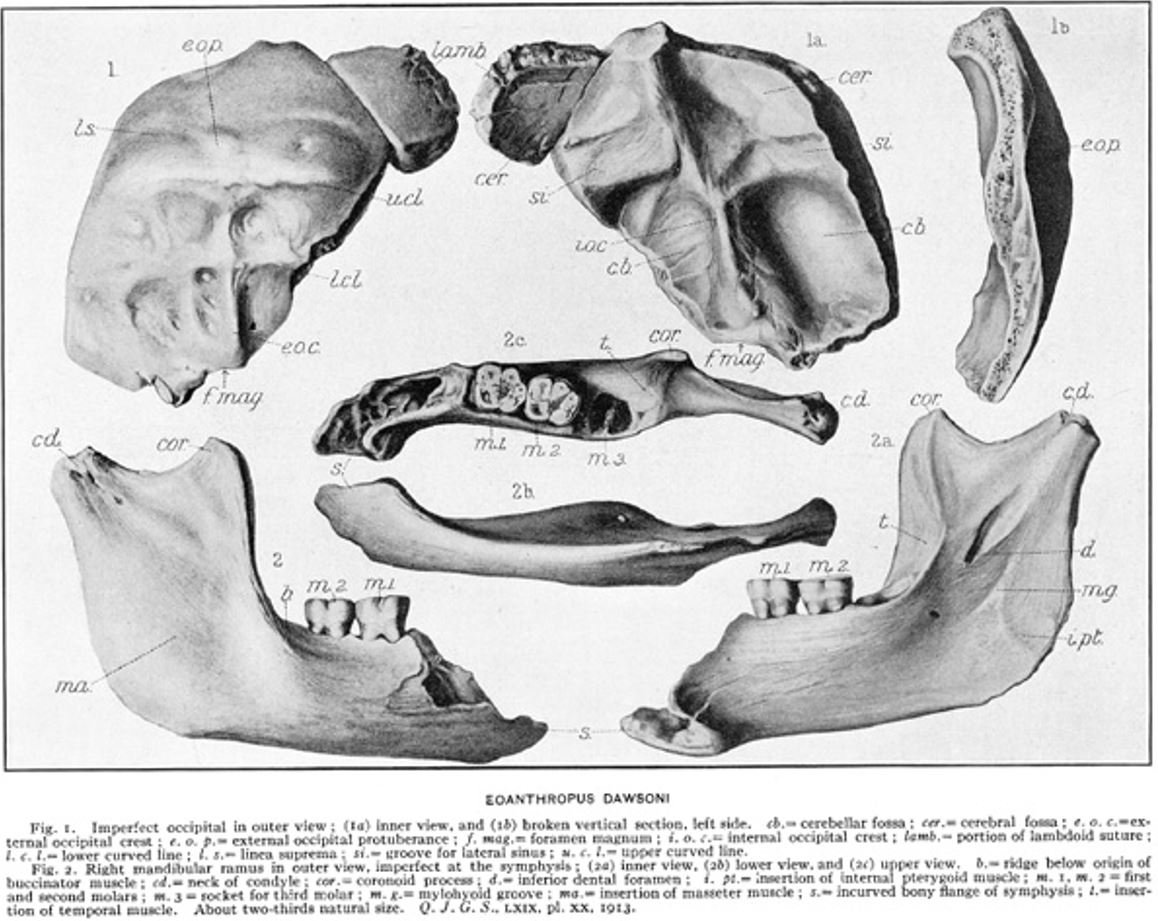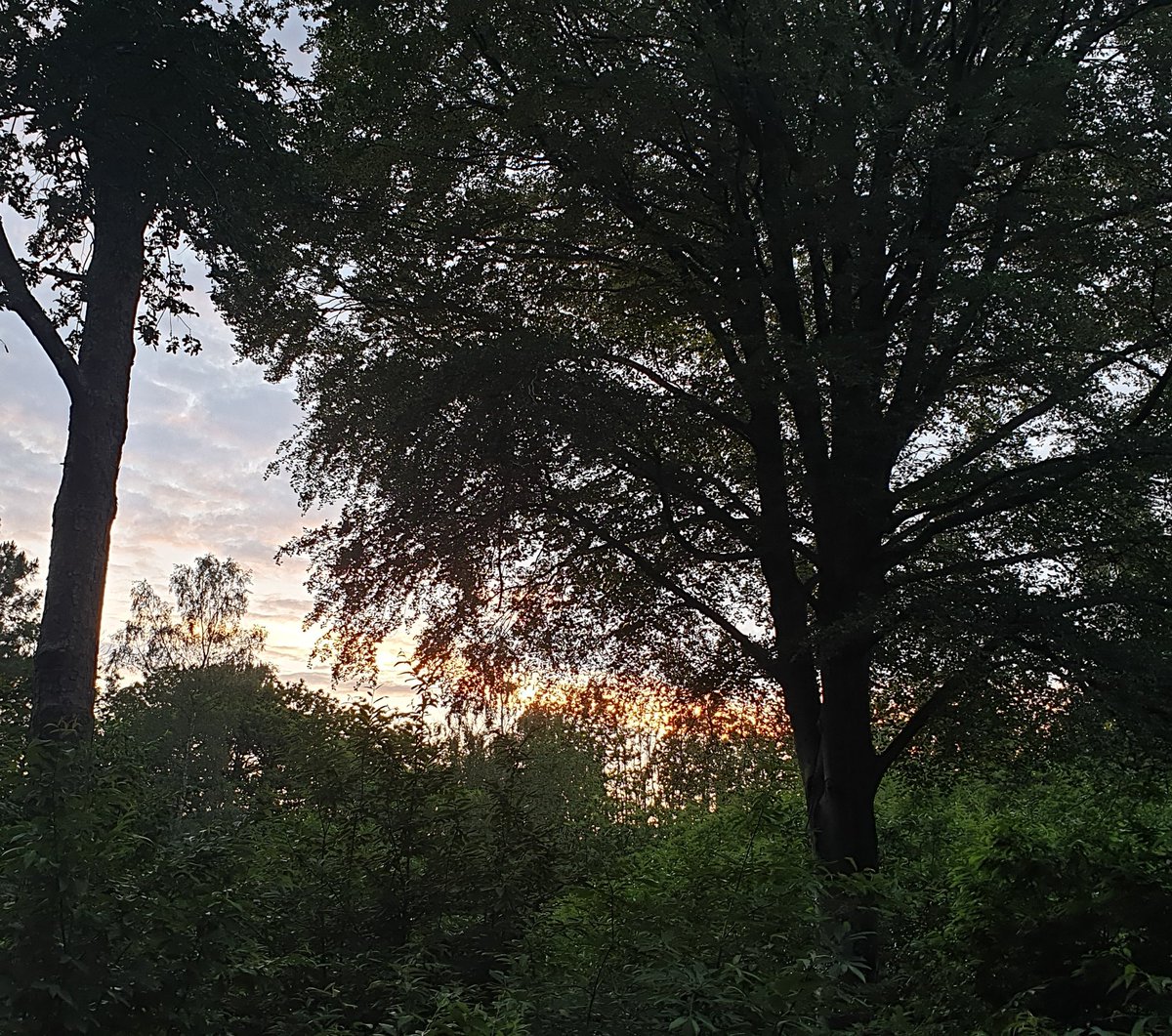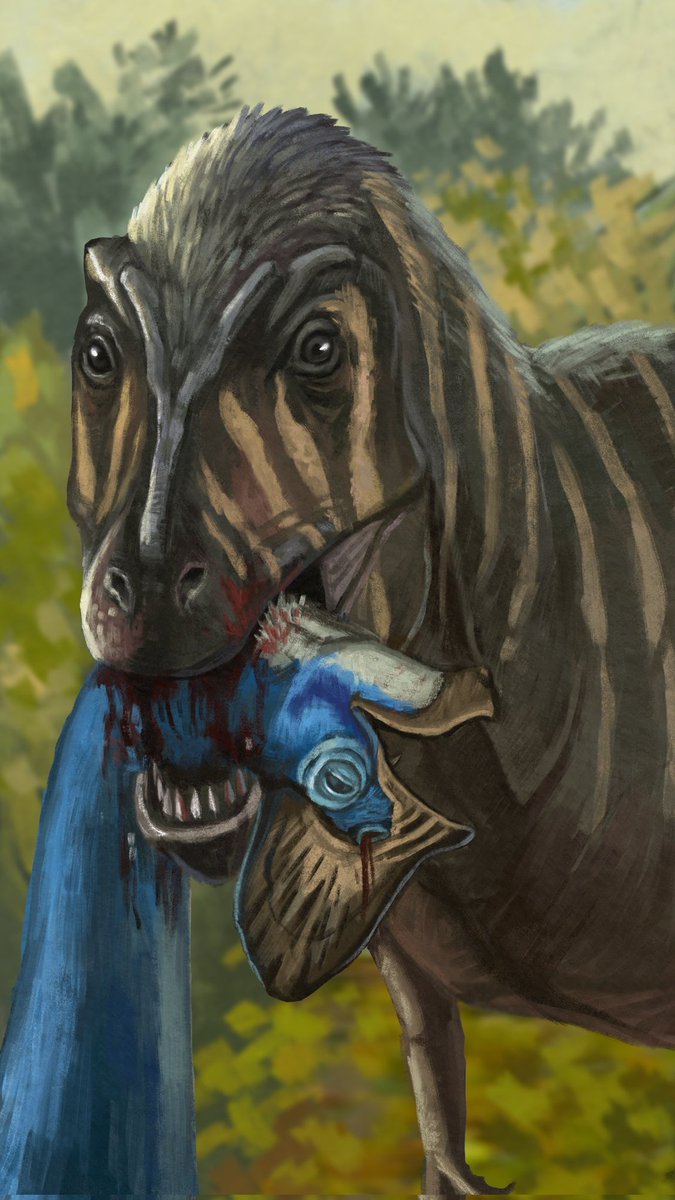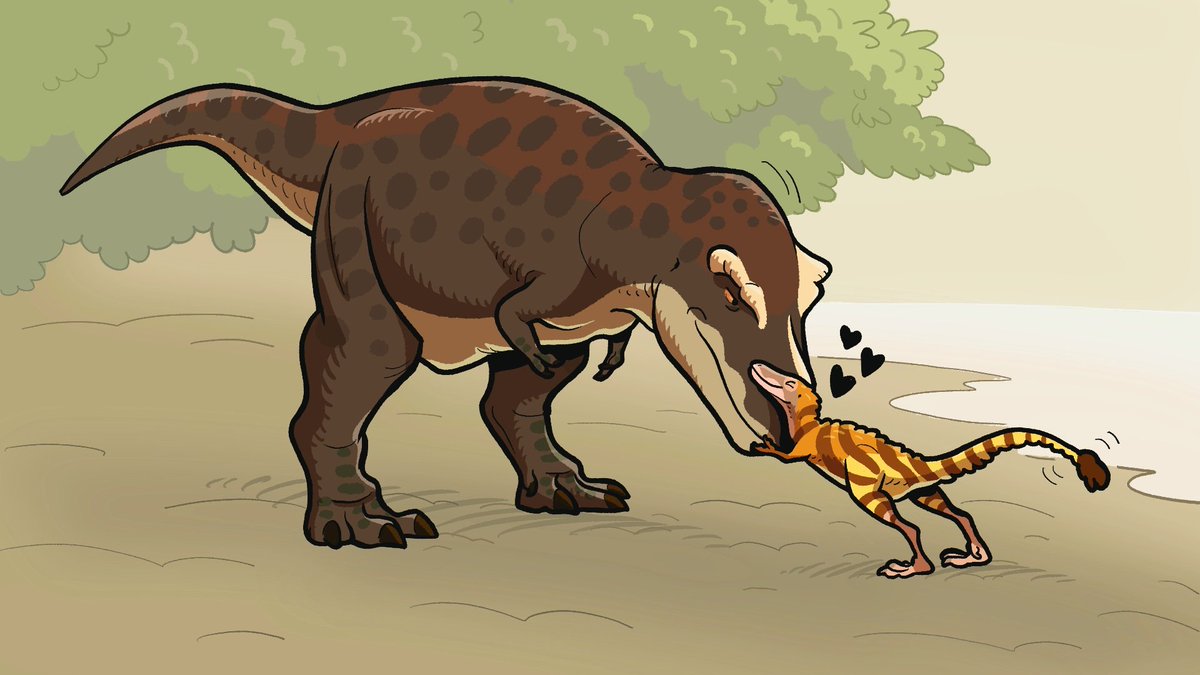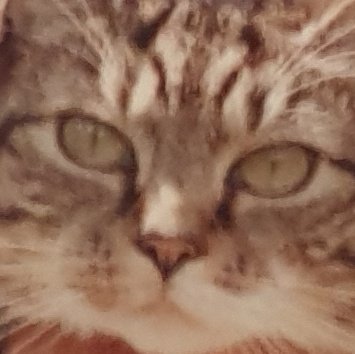Welcome to a somewhat overdue (mega)thread devoted to the @AppleTV / @bbcstudios series #PrehistoricPlanet season 2 (#prehistoricplanet2 if you will), streaming NOW, and specifically to the first episode: ISLANDS... 
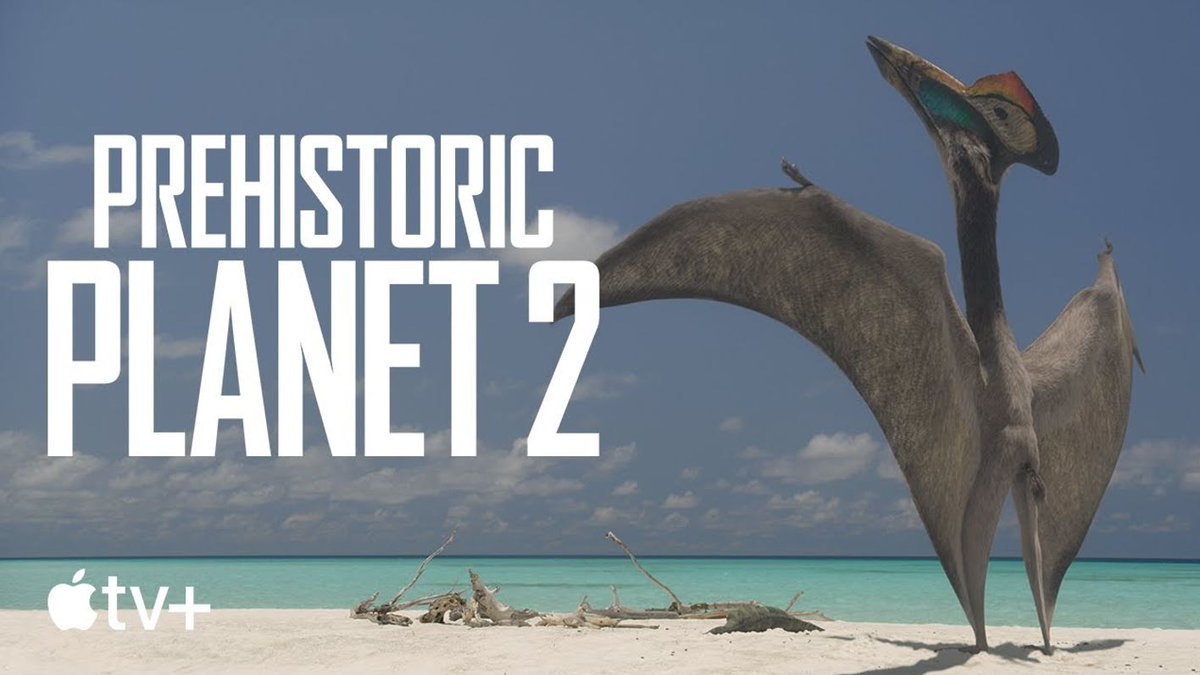
Islands is one of my favourite episodes of #PrehistoricPlanet2. We knew early on that we’d cover stories relevant to the Late Cretaceous island faunas of Romania and Madagascar (since both places have revealed numerous amazing Late Cretaceous island-dwelling animals), but…
... what else could we show? The producer for this episode – Paul Stewart – worked really hard to find appropriate stories, and succeeded in focusing on amazing animals doing interesting things…
As you’ll see, the decisions that Paul and the rest of the team made were very much focused on science and natural history: I have to emphasise how much research was done behind the scenes on #PrehistoricPlanet (shout-outs to Tom L and Ali T for so so so much research)...
We really strived to be as authentic as possible. As ever, I also have to say that making #PrehistoricPlanet was a huge group effort, involving the combined efforts of over 1500 people… 

Filming in the real world involved numerous people on site (for Islands: shout-outs to Bex and Ellen), then there was editing, compositing, sound design, music, steering by team leaders, plus all the admin, people management and so on that comes from combining a team this large.
In the thread here, I very much concentrate on the creative and science-based decisions I was involved in, so please excuse me for being biased and selective in what I cover. Ok, here we go…
Islands opens in Romania as we meet a Zalmoxes that’s been swept out to sea on floating vegetation. High sea levels meant that Europe was flooded at this time, higher areas existing as subtropical archipelagos. Zalmoxes will be familiar if you watched #PrehistoricPlanet season 1. 

Zalmoxes is a small bipedal iguanodontian ornithopod, a member of the same big group that includes Iguanodon and the hadrosaurs (the so-called duckbills). Specifically, Zalmoxes is part of an unusual robust-skulled iguanodontian group called Rhabdodontidae... #dinosaurs 

Zalmoxes species ranged in size from 2-3 m, and the suggestion has been made that they were small, specialised island endemics… #PrehistoricPlanet #dinosaurs
That might not be true; it might instead be that they simply inherited the small size that was ancestral for the group. But, whatever, rhabdodontids of various sorts occurred on most of the islands present west to east across Europe at this time…
A nearby #mosasaur – a member of the widespread, robustly built, thick-toothed genus Prognathodon – is a real and present danger in the sequence. Prognathodon is a mosasaurine mosasaur and thus would have looked similar to its cousin Mosasaurus... 
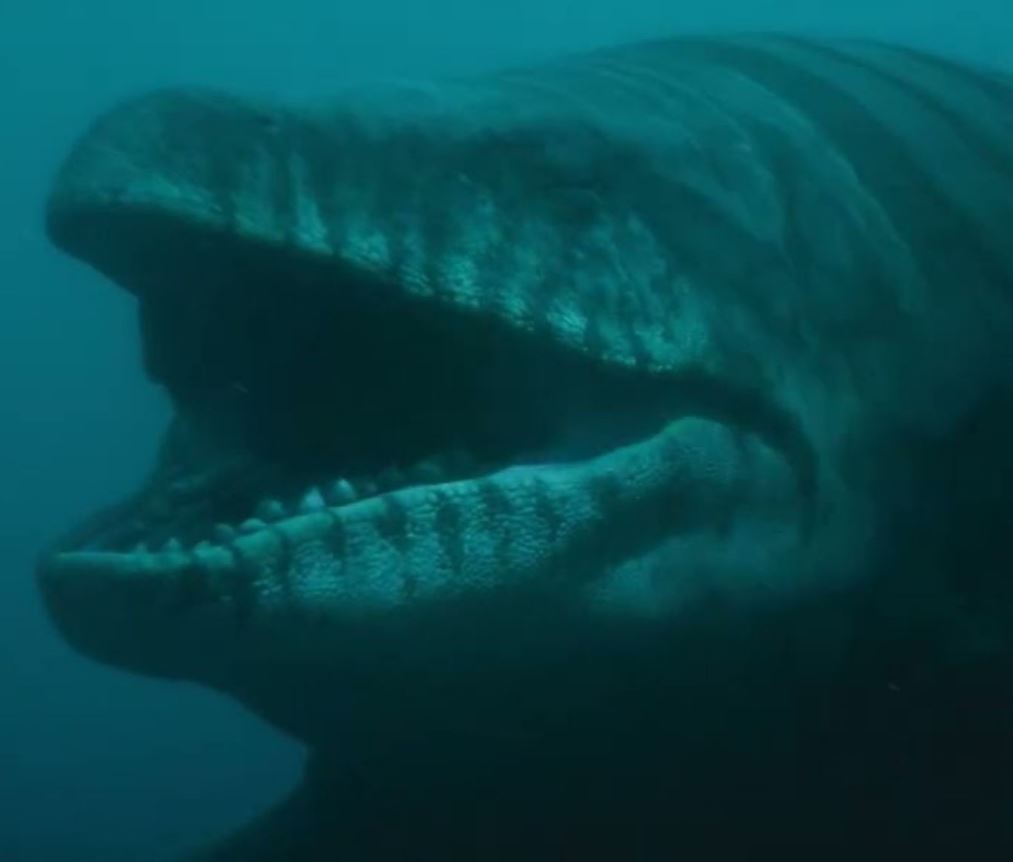
Its stout teeth suggest that (like living lizards with teeth of this sort) it was a generalist, and basically able to exploit animal prey of all kinds… (Prognathodon skull here by Ghedoghedo, CC BY-SA 4.0) 

Openings on the #mosasaur palate might reveal the location of the Jacobson’s organ, a palatal structure that lizards and snakes use in collecting chemicals from the environment via the tongue…
Mosasaur experts mostly think that #mosasaurs had a forked (or bifid) tongue that they used in collecting chemical particles: the mosasaur tongue has sometimes been depicted as long, slim, deeply forked and similar to that of snakes...
We opted instead to go for a tongue more typical of anguimorphs (the big lizard group that #mosasaurs might be part of, read on): still bifid, but shorter, thicker and less mobile… (slow worm image by DuncanFoto, CC BY-SA 4.0) 
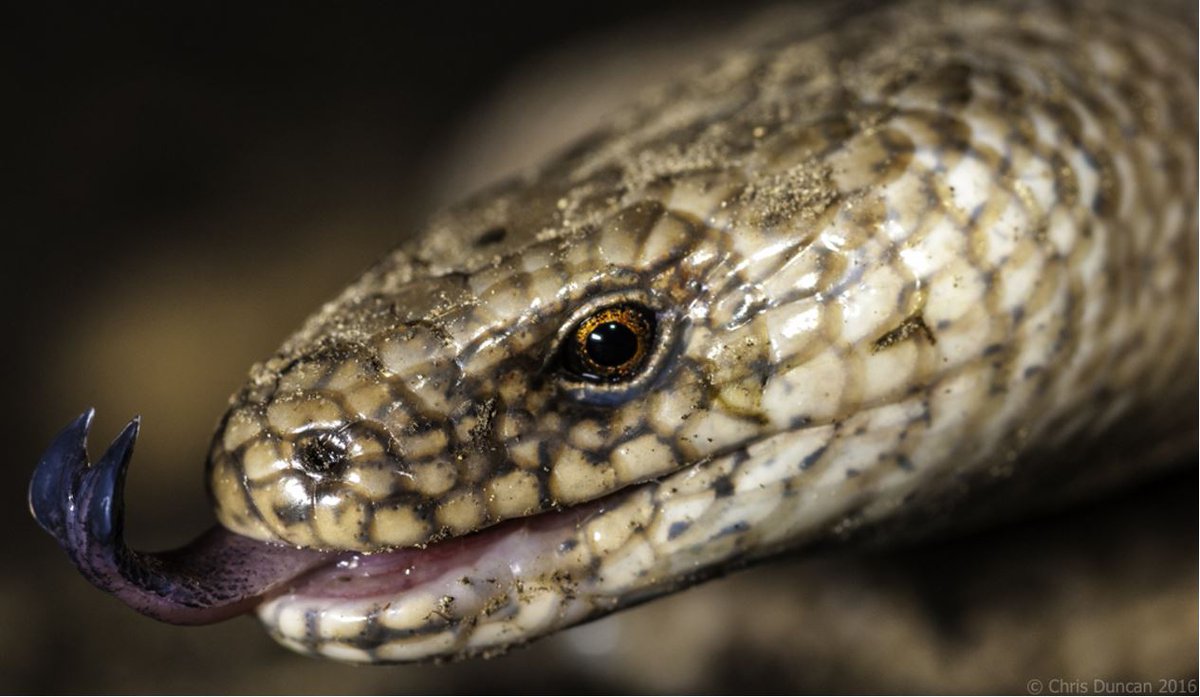
Incidentally, one thing I’ve learnt from the #mosasaur coverage of #PrehistoricPlanet is that people still mostly imagine these Cretaceous #lizards to be close cousins of monitor lizards. That isn’t true and hasn’t been for some decades now...
#Mosasaurs might be part of the same big lizard group as monitors (Anguimorpha; slow-worms, glass lizards and gila monsters are among the group’s other members), but… 
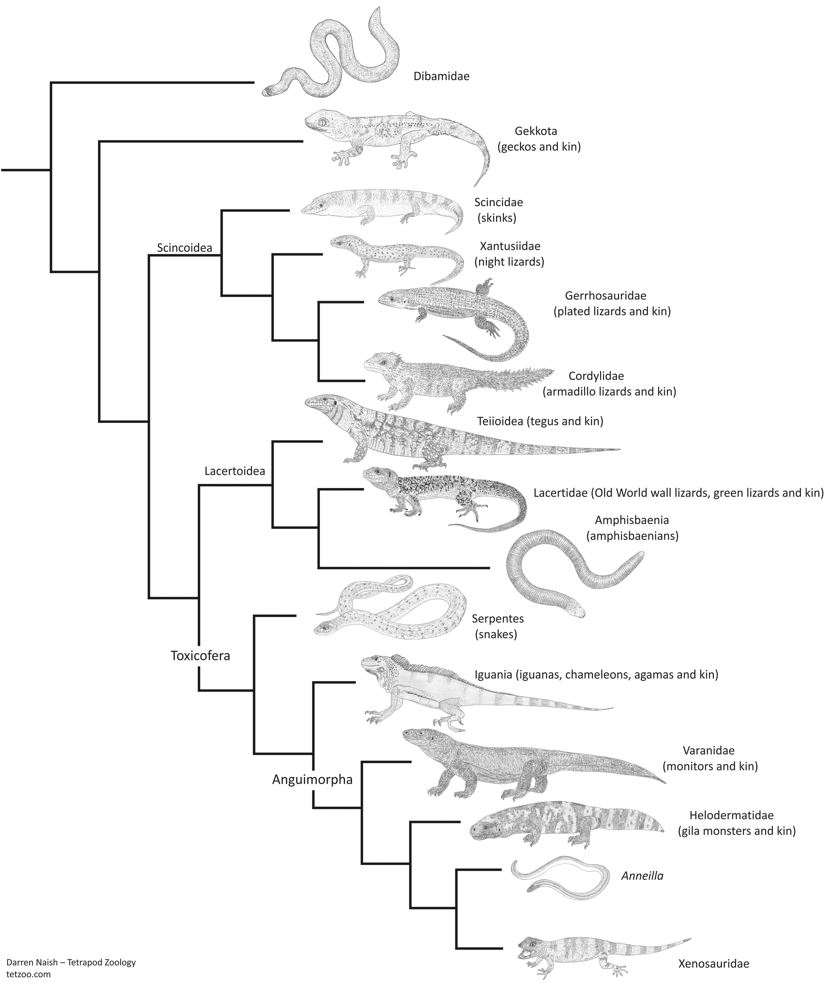
… if they are it doesn’t seem that they were especially close to monitors. And #mosasaurs may not be anguimorphs at all anyway, but part of a different lineage entirely. So quit it with the comparisons between mosasaurs and monitors!
We made several bold decisions in this sequence. In fact, the entire story here revolves around a concept discussed over the course of decades in the zoological literature but rarely presented to popular audiences: namely, rafting as a means of dispersal.
Rafting refers to the phenomenon in which living things disperse over water – including across entire oceans (!) – via use of a floating platform…
Rafting simply _must_ have occurred a great many times in the history of life, since it provides the only sensible explanation for the distribution of such things as monkeys in the Americas, lemurs in Madagascar and iguanas in Fiji…
The term ‘raft’ is problematic, since it creates the impression that animals are making crossings on a few floating logs. The ‘rafts’ that people have seen (sometimes carrying animals out to sea) are more like small floating islands... 



Paul has seen such events himself and his experience was essential in the construction of the raft used in the sequence…
What about rafting and #dinosaurs? Palaeontologists have mostly argued that dinosaurs owe their distribution to vicariance (the phenomenon whereby species live where they do due to the impact of geological barriers and events), not dispersal…
However, the 2021 publication of the Moroccan hadrosaur Ajnabia led its describers to suggest that dispersal across oceans – in cases by rafting – likely did have a role in dinosaur distribution (reconstruction of Ajnabia by Raúl Martín)... #dinosaurs 

Rafting is such an important factor in the colonisation of islands that we simply had to feature it. There’s no direct evidence that Zalmoxes rafted anywhere, but a rafting sequence, Paul and I decided, was crucial for this episode...
In fact, Paul had wanted to show a rafting sequence since the days of The Velvet Claw (and... if you don’t what that is, check it out)… 

Rest of thread coming soon....
Ok, time to continue with thoughts on #PrehistoricPlanet2 / #PrehistoricPlanet season 2, specifically on the Islands episode. Here we go... Oh, happy #FossilFriday :) 





After the rafting/Zalmoxes sequence, we move to the northern shores of Tethys (a region that will eventually become the Mediterranean as Afro-Arabia moves north) where we meet a group of the mid-sized hadrosaur Tethyshadros living on an island that today forms part of Italy…
#Tethyshadros is newish (named in 2009 by Fabio Dalla Vecchia) and is notable for its unusual features relatives to other hadrosaurs: it has a serrated upper beak, reduced hand and enlarged muscles at the thigh, hips and tail base and hence an unusually proportioned tail… 

You can see all of these details in the #PrehistoricPlanet version of this animal, beautifully bought to life by our amazing team at MPC… 



As you can see from the photo showing the original specimen with a person (borrowed from @AAlechiarenza), Tethyshadros was small for a hadrosaur at about 4 m long... #dinosaurs #PrehistoricPlanet 

It’s tempting to suggest that this animal was an ‘island dwarf’ (large animals that become specialised for island life often become smaller over the course of evolutionary time). We initially aimed to go this way in our depiction of Tethyshadros, BUT read on…
Hadrosaur sociality is well established – they were herd-dwellers – but it remains controversial whether juveniles and adults associated in the long term. We show Tethyshadros cropping vegetation and using fore-aft chewing... #PrehistoricPlanet 

These animals inhabited a tropical carbonate platform environment, and we show them in a conifer-dominated habitat where small conifers form dense stands; forests dominated by larger trees are nearby…
The most relevant fossil floras (those of Vernasso and Polazzo) are dominated by gymnosperms, and conifers are common, so this does reflect what we know of the palaeoflora (something very very hard to ‘get right’ when aiming to create Cretaceous scenes)...
We owe thanks to palaeontologist Fabio Dalla Vecchia for discussion and providing appropriate technical information that helped guide us in showing these details…
After we’d finished making our Tethyshadros sequence, a new study of this dinosaur led by Alessandro Chiarenza @AAlechiarenza (published in 2021) showed that a few of the details we’d planned to go with were no longer entirely accurate...
Data from a second specimen (show here) showed that Tethyshadros wasn’t an island-dwelling dwarf after all, but an archaic hadrosaur whose small size was due to its being a ‘primitive’ member of the hadrosaur group... #dinosaurs #hadrosaurs 



More annoyingly, new dating of the sediments showed that Tethyshadros isn’t from the Campanian-Maastrichtian as we’d thought when planning the sequence (#PrehistoricPlanet shows animals from throughout the Maastrichtian, not from the end of the Maastrichtian alone), but...
... instead from the mid or early Campanian, making it about 10 million years out of our time range…
However, a caveat is that Tethyshadros-like #hadrosaurs may well have existed in the region in the Maastrichtian too. Species don't exist in a phylogenetic vacuum: they have cousins, ancestors and descendants, and we’re always seeing a patchy fossil record…
The main story of this sequence concerns Hatzegopteryx, a giant, robust-necked #azhdarchid #pterosaur. Hatzegopteryx was named in 2002 by Eric Buffetaut and colleagues, initially for the back of the skull and a partial humerus; other remains have been reported since... 

Hatzegopteryx is only known from Romania and it may be that it was exclusive to that region. But here we have a paradox, since evidence indicates that these animals were flight capable, in which case moving between islands that now form Romania and Italy would be plausible.
Furthermore, fragmentary giant #azhdarchid remains are known from right across Europe (to France and Spain in the west), perhaps showing that Hatzegopteryx – or Hatzegopteryx-like #azhdarchids, at least – occurred throughout the island archipelagos of the region…
The main event of the sequence is to show the predatory prowess of Hatzegopteryx. These animals would have been terrifying. Giant flying, striding ‘murder storks’, well able to grab and consume animals like small dinosaurs, big lizards, mammals and so on… 

They could fly and were likely good at static soaring, like vultures and storks. An alternative model posits that they were bustard-like burst fliers. This issue is under debate and research is underway, but note that even big bustards can make flights of tens of kilometres… 



What about terrestrial behaviour? Today it’s mostly accepted that #azhdarchids were ‘terrestrial stalkers’. In a 2008 study, @MarkWitton and I argued that the limb proportions, foot morphology, skull and neck anatomy and palaeoenvironmental preferences of #azhdarchids... 

.... pointed to a lifestyle for these animals most similar to that of modern ground hornbills and terrestrially-foraging storks. Here’s our 2008 #OA paper on the terrestrial stalking model… journals.plos.org/plosone/articl… #PrehistoricPlanet #azhdarchids
The Hatzegopteryx arrive and hunt the Tethyshadros, looking for the small juveniles that would be among their preferred prey. The pterosaurs are strong enough kill, lift and even fly off with unfortunate juveniles...
Like it or not, the fossil record shows that juvenile #dinosaurs were hyper-abundant during the Age of Dinosaurs and would have been preferentially targeted by predators…
This view of Hatzegopteryx is based on research that @MarkWitton and I published in 2017; you can see our paper (which is #OA and was published in @thePeerJ) here… peerj.com/articles/2908/ The sequence is ultimately based on Mark’s artwork, this image in particular… #azhdarchids 

Mark and I found that the neck vertebrae of Hatzegopteryx were easily robust enough to allow it to lift and carry relatively large objects: as in, those weighing a few tens of kilos. Here's my Tetrapod Zoology article on this research... blogs.scientificamerican.com/tetrapod-zoolo… #azhdarchids
The idea that #azhdarchids were social and foraged (and perhaps lived) in groups is also based on fossils, since there are several cases whereby the remains of several azhdarchids (and related non-azhdarchid azhdarchoids) have been found together...
This Hatzegopteryx sequence is one of my favourites from the entire series; I really think we depicted #azhdarchids very well, and some people joke about #PrehistoricPlanet being an azhdarchid-themed TV series where dinosaurs and others are bit-players… 



We then move to the south and to Madagascar, which was already an island in the Late Cretaceous. In fact, by this time it had already been isolated for something approaching 100 million years...
The ecosystems of Maastrichtian Madagascar were unusual, one odd aspect being the apparent absence of ornithischian dinosaurs. The first unusual animal we meet is not a dinosaur at all, but…
…. the herbivorous notosuchian Simosuchus, a crocodylomorph. There’s a general tendency (among palaeontologists even) to call all #crocodylomorphs ‘crocodiles’ but I’m pleased to say that we resisted that... 

In living species, ‘crocodile’ only applies to… well, crocodiles. Alligators aren’t crocodiles, for example, and the vast majority of fossil members of the croc lineage shouldn’t be called crocodiles either… 

Whatever, Simosuchus is a remarkable, short-snouted, heavily armoured, chunky little Madagascan crocodylomorph, named in 2000 by Gregory Buckley and colleagues. Its name means ‘pug croc’... 

Numerous specimens are known, some with intact, articulated armour. Because numerous specimens have been found in relatively close proximity, it’s reasonable to think that Simosuchus was social (and some of its living relatives are too), so we show groups of these animals.
In contrast to quadrupedal dinosaurs, we gave them a gait where mobility between the scapula and coracoid allows them to reach forwards with the upper arm, this giving them a longer reach than dinosaurs. We show Simosuchus hiding in burrows that they've partially made themselves.
Simosuchus has a few features which suggest that it had some digging capability, but there’s no reason to think that it was a specialised digger or burrower (as was once proposed).... #PrehistoricPlanet
Let me remind you that living crocs – which certainly don’t look like diggers – can construct tunnels several metres long. I’m confident that #Simosuchus could do likewise, and Paul and I reasoned that they’d need to do this in view of weather extremes and predator avoidance…
The sequence also shows more speculative behaviour. What would an animal like Simosuchus do when confronted by a predator, in this case the abelisaurid Majungasaurus? The fossil record is, of course, pretty much silent on issues like this. But...
.... when aiming to depict the natural history of the past, we have to assume that extinct animals exhibited behavioural complexity similar to that of their relatives and analogues today…
Simosuchus is a robustly built, short-headed, armoured animal equipped with long claws on its hindfeet and sharply keeled armour plates on its shins. We combined defensive pieces of behaviour seen in chunky-bodied lizards, mole salamanders and other animals to...
... devise something that looks realistic when small animals are confronted by predators and have to use every trick in the book to make themselves look potentially dangerous, this hopefully buying them more time... 

Remember than large theropod dinosaurs were not unstoppable killing machines. Like all predators today, they would sometimes have been cautious, conservative and hesitant when aiming to tackle unusual prey, or prey that behaved in an unexpected or surprising way.
The predator here is a Majungasaurus, an abelisaurid (and cousin of #Carnotaurus) known from very complete remains. Its forelimbs were reduced and lacked a mobile elbow and were almost certainly not used in predation at all (the attached image is from Burch & Carrano 2012)… 



Massively developed neck musculature and a very broad, robustly built skull suggest that it bit hard and subdued prey – juvenile titanosaurian sauropods, perhaps – by dragging them to the ground and continuing to apply pressure.
A centrally placed knob on the middle of its forehead would have been enlarged by horn in life and it’s not possible to know how long that horn was (skull images here from Sampson et al. 1998). We were ultimately quite conservative… 

The injured Majungasaurus we meet in this scene is inspired by a specific individual, published in 2020 by Samuel Gutherz and colleagues, that preserves numerous injuries. This poor animal had injuries in the face and lower jaw, spine, arm, ribs and belly... 

These pathologies likely had multiple causes but we planned to show some of them occurring as the consequence of an attack by the ‘hippo-faced’ crocodyliform Mahajungasuchus, and we actually got very far in showing such a scene before it had to be abandoned... #PrehistoricPlanet
A few people have complained about the general absence of #crocodylomorphs from #PrehistoricPlanet. Look, we _wanted_ to include as many animals as we could, we really did, but there’s only so much that can be done in view of time constraints, people power and so on.
Our Majungasaurus is, I think, another phenomenally successful render. It owes its general look to concept images created by Gabriel Ugueto @SerpenIllus but was bought to life in CG by the brilliant team at MPC…
In keeping with our emphasis of non-dinosaurs, we also wanted to showcase the presence of unusually large mammals on Late Cretaceous Madagascar. It’s fair to say that mammals never got much coverage in #PrehistoricPlanet. I hope that people can understand why this was so...
-- we just can’t do everything, and for – again, I hope understandably – simply _had_ to focus on big superstar animals more than more ‘familiar’ ones. There were plans early in the project to...
.... feature various multituberculates (you can call them MTBs for short), early therians and others – I designed initial concept art for several species – but all had to be abandoned…
Anyway, we focus on the badger-sized Adalatherium, a gondwanathere published in 2020 and brand-new when we decided to feature it. Producer Paul did his PhD on badgers (proper European badgers, that is) and there was a joke that we were featuring one of his favourite animals... 

However, Adalatherium is so odd in so many ways that what we have is quite unique. Again, what an incredible job from the MPC team in bringing it to life. The concept art, again, was Gabriel Ugueto’s @SerpenIllus… #PrehistoricPlanet 

Mammals were diverse and abundant in the Age of Dinosaurs, and an interesting thing about many of them – many, not all – is that they must have been egg-layers, like the living monotremes (the echidnas and platypus).
We really wanted to show Adalatherium as an egg-layer in order to bring this message home but… would it be correct to show a gondwanathere as an egg-layer?
We have no direct data on the reproductive habits of these animals. However, some experts have argued that gondwanatheres are allied to multituberculates, and (as of 2020) there had been a small amount of discussion on the reproductive habits of MTBs...
... some experts positing egg-laying, others saying that they were likely viviparous…
What, then, to do about a gondwanathere? We asked a few Mesozoic mammal specialists for a steer on this but they refused to commit. In an effort to work out what might be going on, I reviewed what authors had said, the result being this 2020 article… tetzoo.com/blog/2020/5/29… 



We basically convinced ourselves that we were ok to go with egg-laying, and we also opted to be innovative and show the Adalatherium using a reproductive strategy not present in the highly specialised egg-laying mammals of today...
... since our mother produces a much larger clutch than monotremes. There are, after all, a great number of Mesozoic mammal lineages and it’s utterly reasonable to show certain of them using strategies different from those used by echidnas and platypuses…
I won’t say exactly how we filmed the hatching scenes we did, but what a success. In fact our Adalatherium youngsters look fantastic at all ages... 

A problem we always faced in making #PrehistoricPlanet was making hard decisions on things that might ultimately be shown to be wrong, or – at least – arguable...
Shortly after we finished our Adalatherium sequence, Weaver and colleagues published a study (this was in 2022) showing that the bone histology of MTBs was similar to that of placental mammals, not egg-laying monotremes (diagram from Weaver et al. 2022; art by @AndreyAtuchin)… 



Ergo, MTBs likely did not lay eggs. By inference, the possibly related gondwanatheres perhaps did not too. Buuut it remains possible that gondwanatheres were very different from MTBs (and may not be close to them at all): what we show in #PrehistoricPlanet remains a possibility…
We move on to #dinosaurs on an island near James Ross Island near the Antarctic Peninsula. We focus on the paravian theropod Imperobator (found 2007, named 2019), and the elasmarian ornithopod Morrosaurus (found 2002, named 2016; reconstruction here by lythronax-argestes)... 

The poles were much warmer during the Late Cretaceous than they are today, but the detailed palaeoclimate model produced for us by @Climate_AlexF, Bob Spicer and Paul Valdes was still consistent with the winter-time presence of freezing temperatures, and hence snow and ice... 



These dinosaurs lived in environments that were forested and temperate for much of the year, but certainly cold on occasion. The animals must have been adapted to such changes...
Imperobator is not well known – it’s based almost entirely on an unusual foot about 45 cm long (image from Case et al. 2007) – but this possesses features of paravians, the big group that includes dromaeosaurids, troodontids and birds... 

By the way, the name Paraves means ‘besides birds’ and is thus not ideal given that it _includes_ birds. Imperobator would have been similar to those paravians we know from better remains, with a full plumage, a long, feathered tail, feathered forelimbs and longish toothed jaws. 

There’s a tendency when reconstructing feathered dinosaurs of cool places to make them look like white snow-beasts. We avoided that; initial looks that I devised for both animals were redrafted by Gabriel Ugueto @SerpenIllus before being handed to MPC. Again, what a success…
A plan at one point was to emphasise how the two animals had different methods of manoeuvring, Morrosaurus using the mass of its tail to help shift its centre of gravity, and Imperobator using the feathered surfaces of its forelimbs and tail as air-brakes… 



Now, finally, we come to the last sequence of Islands, and one of the most beloved sequences in all of #PrehistoricPlanet 2. Namely, that featuring courtship and mating in Hatzegopteryx. #azhdarchids 

Again, it goes without saying that we know almost nothing about these things. However, we can make extrapolations and speculations based on what the fossils show, and on the ‘rules’ that exist among the living relatives of pterosaurs (the archosaurs: crocodylians and birds)…
Our starting point is that these animals were sexually dimorphic, the males having larger, more elaborate head crests than the females. This is inferred across azhdarchoids (the big group that includes azhdarchids) more broadly...
Melanosomes on azhdarchoid crests (shown here, from Cincotta et al. 2022) indicate that the crests were colourful, which is more evidence for a role in sexual display. The flamboyant azhdarchoid shown here - by @BobNichollsArt - was reconstructed on the basis of this evidence... 



A special ‘breeding season’ colouration is not unusual in living animals (lizards, but birds especially) and I don’t see this as an unreasonable speculation for such showy, display-oriented animals… #PrehistoricPlanet #azhdarchids 

The male constructs a symbolic nest that includes a deceased baby dinosaur, and our idea to go with this concept was inspired by Paul’s experience with birds-of-paradise and bowerbirds (he filmed many of the sequences you’ll know from other documentaries)... 

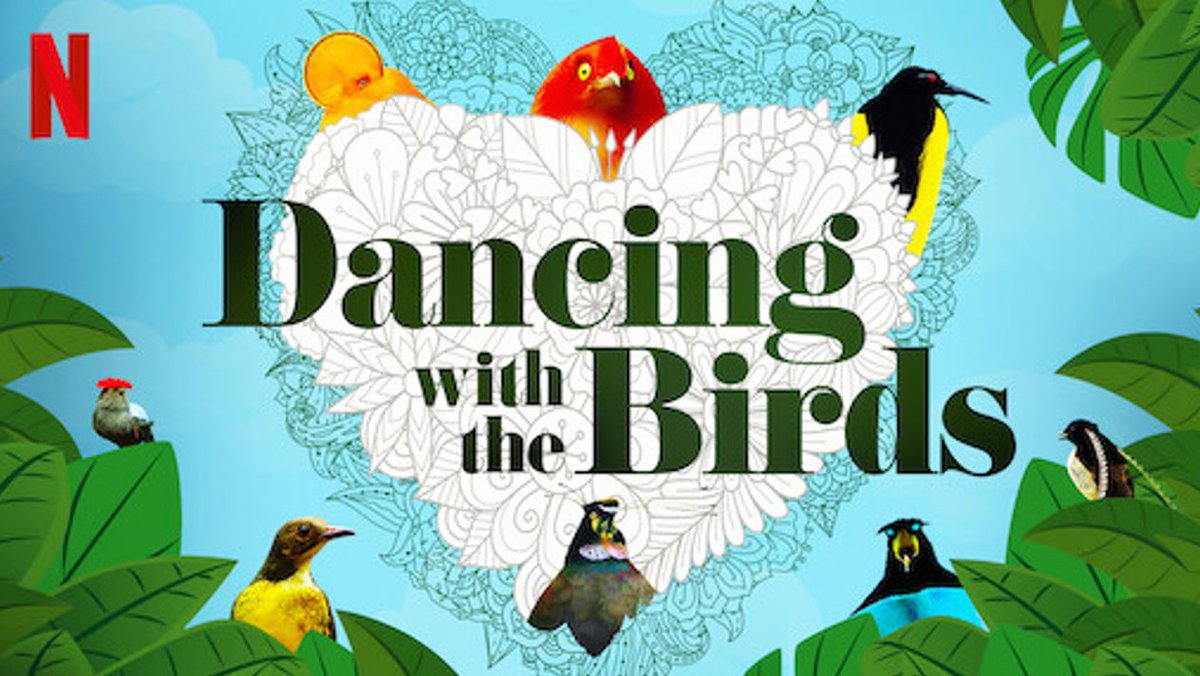
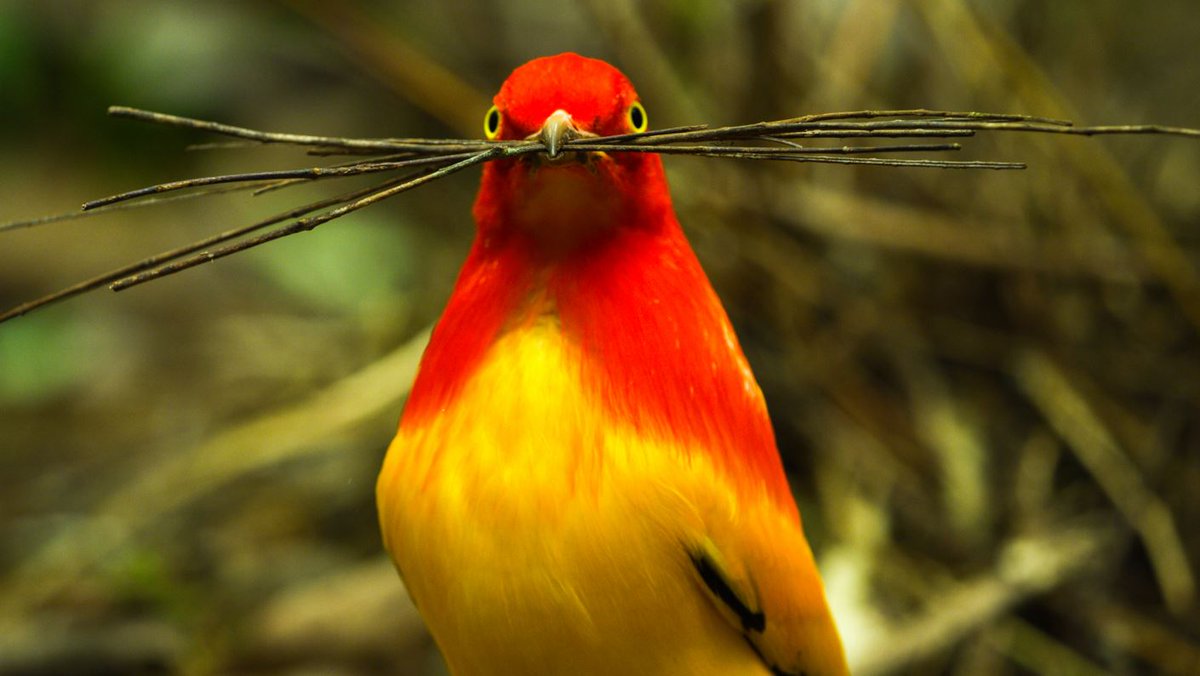
All this is speculative, but inspired by behaviours that showy archosaurs use today. As ever, my argument (and that of the #PrehistoricPlanet team more widely) is that we should embrace, to a degree, the idea that extinct animals were sometimes as surprising as living ones…
In fact, it’s misleading to be conservative _all the time_, since the living world surprises us with weirdness all the time: it seems more correct to assume that weirdness in the past was routine and commonplace than the opposite...
I have to note that Hatzegopteryx courtship scene has inspired some brilliant fan-art, some of which is shared here… #PrehistoricPlanet #azhdarchids 



On the gift of the dead dinosaur… such behaviour is called ‘nuptial gifting’ and is seen in predatory animals today; it’s widespread in arthropods but is also present in predatory birds such as shrikes, hornbills, and several cuckoo and kingfisher species...
Because some of these birds are modern analogues of our predatory, vaguely hornbill-like #azhdarchids, nuptial gifting again seems like a reasonable speculation…
We reasoned that such big, potentially dangerous animals would use a series of ritualised postures to signal non-aggressive intent, something seen widely in living archosaurs...
The male displays by ‘sky-pointing’, by displaying his wings, and by combining these movements with a vocal display (our #pterosaurs make deep, drumming or booming sounds, again based on analogy with living archosaurs)... 


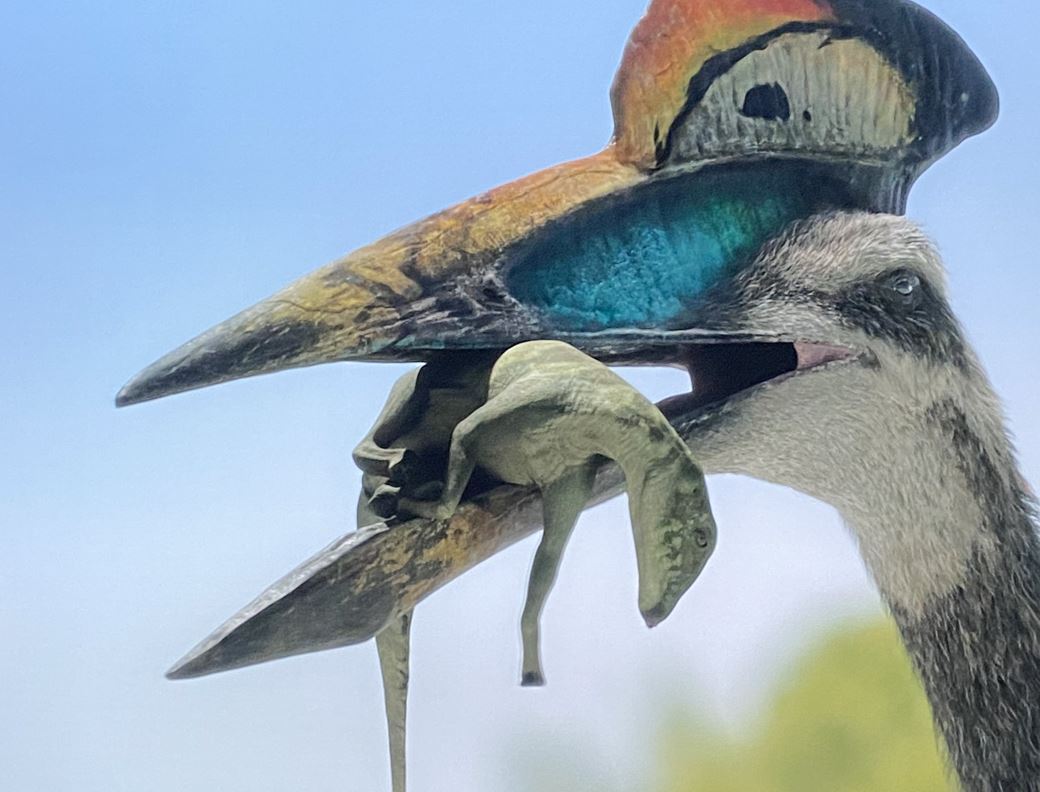
Finally: mating. We know essentially nothing about the mating habits of #pterosaurs so, again, had to make a series of conclusions for the sequence to work. Here I want to emphasize that pterosaurs had been flying the skies for over 160 million years at this point...
.... meaning that we really should be imagining them as highly specialised (arguably more so than birds and bats) for aerial life. For that reason, we decided on a brief mating event that involves rapid, err, exchange… 
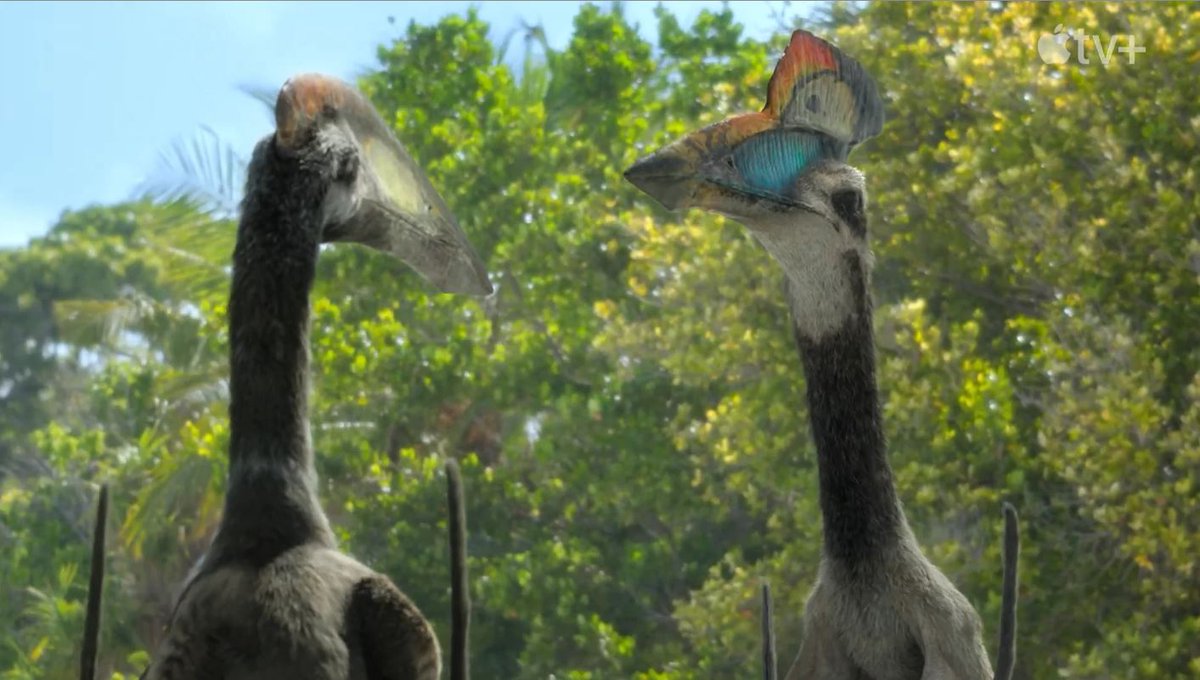
The male has a light hold of the filaments on the back of the female’s neck: a ritualised, ‘ceremonial’ version of the neck-grip we infer to have been widespread across reptiles…
And that is that, the end of this episode 1 mega-thread! This took some time to put together, but I hope it provides useful and interesting information on what we portrayed and why we did it. Here's your reminder that #PrehistoricPlanet is streaming now on @AppleTV... 

Remember also that there's an official #PrehistoricPlanet #podcast, featuring executive producers Jon Favreau and Mike Gunton, series producer Tim Walker, David Attenborough and others from the team, available here ... music.amazon.co.uk/podcasts/386ca… 

Thanks to all those who’ve said positive things about #PrehistoricPlanet, we appreciate your support :) And huge thanks too to everyone who worked with me on this amazing project and enabled it to come to life, what a ride! Threads on the other episodes are coming soon... 
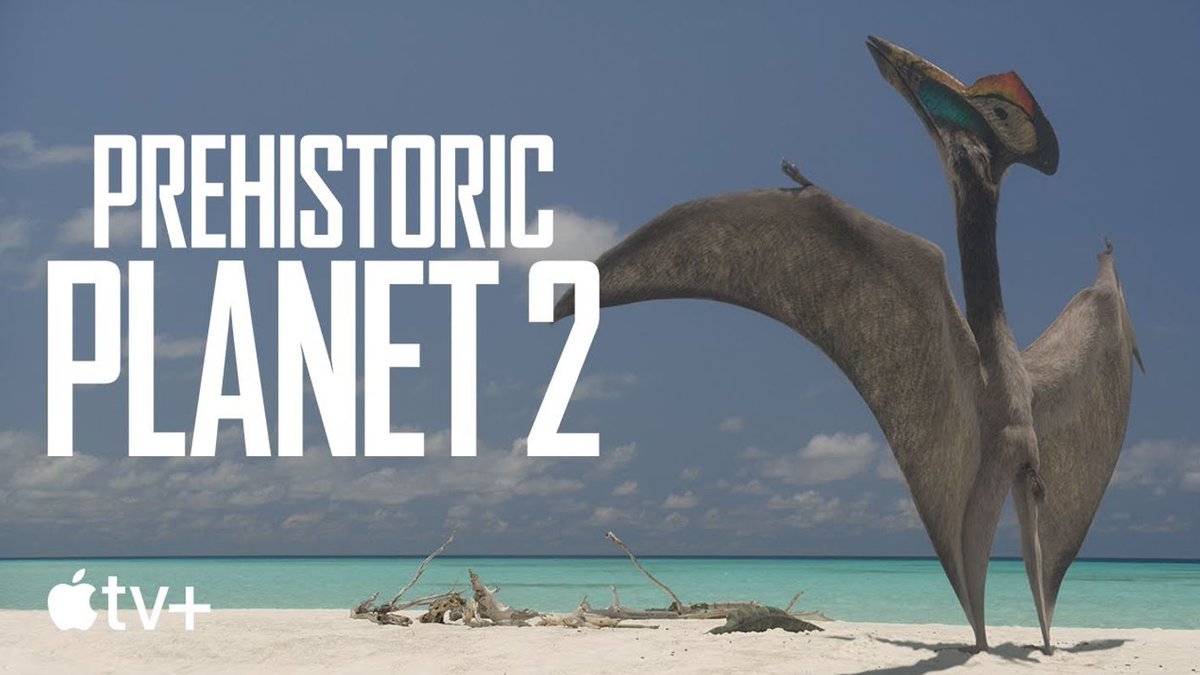
• • •
Missing some Tweet in this thread? You can try to
force a refresh





